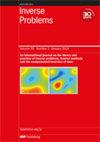基于贝叶斯界面技术的标准 k-ϵ 湍流模型闭合系数的反估计,方法是限制周期性山丘上流动的 DNS 数据点数量
IF 2
2区 数学
Q1 MATHEMATICS, APPLIED
引用次数: 0
摘要
在不同的湍流建模数值方法中,雷诺平均纳维-斯托克斯(RANS)是最常用、计算最合理的方法。然而,RANS 的精度低于其他高保真数值方法。在这项工作中,对与标准 RANS 湍流模型系数相关的不确定性进行了估计和校准,以提高精度。校准通过对系数的单独和整体考虑来进行。在五个系数(和 σk )中,对标准湍流模型的前三个系数进行校准。使用 Metropolis-Hastings 算法的贝叶斯推理技术用于量化不确定性和校准。选择周期性山丘上的水流作为测试案例。气泡在和处的分离高度以及不同位置的流向速度被选为与 DNS 结果进行比较的相关量。校准使用现有数据集中的已知高保真数据(直接数值模拟)。根据校准后的闭合系数重新计算速度场,并与使用湍流模型标准系数(基线)计算出的速度场进行比较。校准后的 Cµ 与基线的偏差几乎为 50%-60%,而 Cµ 与基线的偏差分别为 3%-12%和 6%-9%。该算法针对不同的雷诺数和数据点进行了测试。同时还进行了敏感性分析。本文章由计算机程序翻译,如有差异,请以英文原文为准。
Bayesian interface technique-based inverse estimation of closure coefficients of standard k−ϵ turbulence model by limiting the number of DNS data points for flow over a periodic hill
Among different numerical methods for modeling turbulent flow, Reynolds-averaged Navier–Stokes (RANS) is the most commonly used and computationally reasonable. However, the accuracy of RANS is lower than that of other high-fidelity numerical methods. In this work, the uncertainties associated with the coefficients of the standard RANS turbulence model are estimated and calibrated to improve the accuracy. The calibration is performed by considering the coefficients individually as well as collectively. The first three coefficients of the standard turbulence model are calibrated among the five coefficients ( and σk ). The Bayesian inference technique using the Metropolis–Hastings algorithm is applied to quantify uncertainties and calibration. Flow over a periodic hill is selected as a test case. The separation height of the bubble at and , along with the streamwise velocity at various locations, has been chosen as the quantities of interest for comparing the results with DNS. The calibration is performed using known high-fidelity data (direct numerical simulation) from the available data set. The velocity field is re-calculated from the calibrated closure coefficients and compared with the same calculated with the standard coefficients of turbulence model (baseline). The deviation of calibrated Cµ is almost 50%–60% from baseline and for and it is 3%–12% and 6%–9% respectively. The algorithm is tested for different Reynold numbers and data points. A sensitivity analysis is also performed.
求助全文
通过发布文献求助,成功后即可免费获取论文全文。
去求助
来源期刊

Inverse Problems
数学-物理:数学物理
CiteScore
4.40
自引率
14.30%
发文量
115
审稿时长
2.3 months
期刊介绍:
An interdisciplinary journal combining mathematical and experimental papers on inverse problems with theoretical, numerical and practical approaches to their solution.
As well as applied mathematicians, physical scientists and engineers, the readership includes those working in geophysics, radar, optics, biology, acoustics, communication theory, signal processing and imaging, among others.
The emphasis is on publishing original contributions to methods of solving mathematical, physical and applied problems. To be publishable in this journal, papers must meet the highest standards of scientific quality, contain significant and original new science and should present substantial advancement in the field. Due to the broad scope of the journal, we require that authors provide sufficient introductory material to appeal to the wide readership and that articles which are not explicitly applied include a discussion of possible applications.
 求助内容:
求助内容: 应助结果提醒方式:
应助结果提醒方式:


